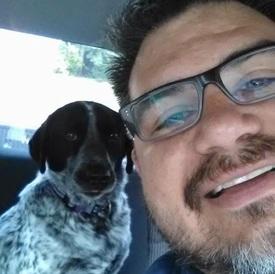Shin Splints

Rorozco
Posts: 7 Member
I love to run, but I get horrible shin splints. When ever I ask the doctor she tells me to stop running and talk. But I really enjoy running and want to stay with it. Does anyone have any advice on how to get rid of them or at least help with the pain.
0
Replies
-
Have you had your shoes fitted at a running store? Your choice of shoes could do that to you.0
-
Oh, and strangly enough, you can also get shin splints if you tie your shoes too tightly.Have you had your shoes fitted at a running store? Your choice of shoes could do that to you.0 -
I had the same problem when I started running. My trainer friend gave me some great stretches that helped. I also made sure to put my legs up and ice my shins after every run. Her best advice was not to run through the pain. It only made things worse. Right now I can run 25 minutes straight {doing c25k} and I have NO shin pain.0
-
I have shin splints from running barefoot. I find when they act up, if I rest, ice and ibuprofen them and then wear sneakers the next time I run or workout, I'm ok. But since I've developed them, they have not gone away completely. Partly my fault b/c I will still run and work out barefoot.0
-
I hated running at first because of my shins. Everyone told me that I needed new shoes and yes...I do but I had never ran before and was running on a up and down trail. I think it was a combination of the surface I was running on and my legs getting use to running all together. After a week of running with pain it slowly stopped but I did not stop. Even if I just ran one mile with a little pain I pushed through it. Maybe this is all bad advice but it worked with me. I am still wearing the same shoes and I have no shin pain.0
-
-
I play indoor volleyball and started getting shin splints myself. My doctor pretty much said the same thing, "no way to get rid of them except to stop playing..."
Massaging them out is helpful, but painful.
Knowing that it was time for new shoes anyway, I went to buy new shoes thinking that might at least help but ended up buying sole inserts as a cheaper option to try first and I have seen an incredible improvement! I still need new shoes, but since using the inserts for the past month or two, the shin splints have not come back at all!0 -
also, shorten your stride. that was my biggest problem with shin splints and once i shortened my stride, not a twinge was felt.0
-
Ice. I usually don't have a problem with them, but one year in high school I did. It was during 2 a day football practice. I'd come home from the first practice and lay face down on the floor with 2 bags of ice under each shin and fall asleep. I'd wake up and go to the second practice and I was able to make it through thanks to the ice. After about 2 weeks they stopped on their own. Not sure why they did, or if you've got the time to ice them for 3 hours a day, but I never stopped working out and kept going the whole time and they went away on their own.0
-
Before you run always do the ABC's with your toes ...(make an A using your toe and so on and so forth) Repeat this after you run as well... also have a paper cup filled with water (place it in your freezer) so when you ice your shins you can peel the cup down as it melts.0
-
It can depend on your particular situation, but there are some things that help in general.
First, if you have shin splints right now, you need to take a break until they don't hurt anymore. If you keep running or doing things that keep inflaming it, it's just going to get worse. Rest, and ice them for now - if they're not too bad, it shouldn't take long for them to get better.
What has helped me: doing all my workouts barefoot, and paying very careful attention to where the weight is on my foot when I come down on it. Too much heel or too much toe, and I can feel the shin splint area start to get uncomfortable. Each time the foot comes down, it has to be evenly on the middle/ball of the foot. After a couple weeks of being mindful of that, I feel less prone to shin splints. Traditional running shoes are made to allow you to land on your heel without discomfort; that kind of stride causes shinsplints, so getting out of those shoes to learn the proper stride is helpful.
Also, in addition to stretching the calves really well, also exercise the shins - there are dozens of variations of "toe lift" exercises that strengthen the muscles along the shinbone. Many people say that the cause of shin splints is an imbalance in the lower leg: strong, tight calves, and weak muscles in the front. Whether that's true or not, I think doing toe lift exercises has helped a lot. You can sit on the edge of a table with a plastic bag weighted with a book or two hanging off your toes, and just lift it up. You can place a rolled up towel on the floor in front of your chair, and pick up and flip the towel over with your toes. Slow "ballerina" rolls of your foot (point toes, make circles) work it as well. Like I said, there are a lot of things you can do, and you can do plain old toe lifts anywhere - at night before bed, in the shower, at a stoplight, anywhere. After about 25 or so, you will start to feel the muscles burn in the place where you get shinsplints, and you gradually work up to doing more at a time. (Again, don't do these if the area is already inflamed. Let it rest first.)0 -
Stretching before and after properly and stretching during your non-workout times. Google the stretches and they will help tremendously. Also, I would definitely suggest laying off the running for a few days to let them heal a bit. Try a different form of cardio that doesn't aggravate them. I had severe shin splints and the only things that helped were rest, tons of stretching, and finding another type of cardio until I lost a little more weight. Good luck!0
-
And please don't tell yourself that you can push through them... I had shinsplints for a solid 4 months in college from cheerleading, and they do not go away unless you rest. From then on it's all about prevention.0
-
Check your shoes for starters. IF they are on too tight, are too worn, or if you are putting up too many miles, they could be the culprit.
Look into Active Release Therapy thru a trained Chiropractor. Its a combination of a few different types of treatments (in my case they used Chiropractic, Massage, and Accupuncture) It worked wonders for me, had 7 treatments last year and haven't needed since. I have also increased my mileage to 40-50 Km per week.
There are different types of shin splints as shin splints is a catchall diagnosis. There are anterior shin splints and posterior shin splints. I would see someone who specializes in sports injuries to determine what you have exactly. I emphasize the specializes in sports injuries part... the treatment you receive will be 10 fold better. In my case, I had Anterior shin splints lower in my ankles, because of poor dorsiflexion. It wasn't until I saw someone who specialized that I could properly treat it.
The point in this is that to treat the disorder you need to understand it. In understanding it you can overcome it. I would recommend spending a few bucks to treat it right so that it doesn't linger.
Good Luck!0 -
I have found this foam roller to be super helpful for my shin splints!
http://sportsmedicine.about.com/od/flexibilityandstretching/ss/FoamRoller.htm0 -
I can fix them in 2 mins, before you run, walk on your heels with your toes in for for 10 steps then wth them in then in the middle, 10 steps each time. after your run do the same thing. mine stopped that same day0
-
I was having horrible shin pain just from walking when I started out.
First, rest til they are better.
You can google exercises to strengthen your shin muscles...one is as simple as sitting in a chair, feet on the floor and just lift up the ball of your foot and tap your toe for a minute or two at a time.
Also, i found I was so gung-ho about getting out there and walking, I was striding way to far. By striding with your leg to far out in front it puts a strain on your shin. Shorten your stride and it is better to have your leg stay behind you longer than to get it out front to far.
I am no expert tho.. this is from research and trial and error. Seems to be working, I can walk now and do some jogging without pain.0 -
Shin splints (aka. medial tibial stress syndrome) can be caused by a lot of reasons OTHER than ill-fitting shoes:
Running on very hard surfaces, rapidly increasing your mileage, running much faster than normal, and running too far too soon, are common reasons for shin splints.
Put rest days in-between running days, back off mileage and intensity, and run on softer surfaces (grass, dirt, rubberized tracks, treadmills).
As other already mentioned, stretch, walk on heels, and ice afterwards. Running shoes start to break down after 400-500 miles, so consider that as well.
Ibuprofen is your friend. If I get shin splints with a race right around the corner, I'll take some Ibuprofen about 3 hours before the race start, and coat my shins with Biofreeze. Understand of course, that if you keep pushing through the pain you may end up with stress fractures, and that means no running for a few months.0 -
All good advice. In college, the trainers and PT's always had us athletes doing 3 basic things for shin splints: 1. ice 2. stretch 3. strengthen0
-
I agree with the shoes...I had very painful shin splints last summer and it was my shoes. When I went to the running store, they told me that stability running shoes work best for shin splints so I got a pair of those and I have had no issues since.0
This discussion has been closed.
Categories
- All Categories
- 1.4M Health, Wellness and Goals
- 398.5K Introduce Yourself
- 44.7K Getting Started
- 261K Health and Weight Loss
- 176.4K Food and Nutrition
- 47.7K Recipes
- 233K Fitness and Exercise
- 462 Sleep, Mindfulness and Overall Wellness
- 6.5K Goal: Maintaining Weight
- 8.7K Goal: Gaining Weight and Body Building
- 153.5K Motivation and Support
- 8.4K Challenges
- 1.4K Debate Club
- 96.5K Chit-Chat
- 2.6K Fun and Games
- 4.8K MyFitnessPal Information
- 18 News and Announcements
- 21 MyFitnessPal Academy
- 1.5K Feature Suggestions and Ideas
- 3.2K MyFitnessPal Tech Support Questions














